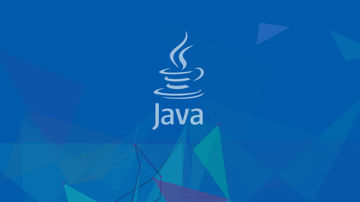opencv的目标跟踪算法(OpenCV Object Tracking)
今日拜读Adrian Rosebrock的大作,看到了有关OpenCV Object Tracking的算法介绍,写了代码跑了一下,果然很神奇!,特别做了笔记学习一下,分享给大家.
trace.png
Adrian Rosebrock的OpenCV Object Tracking原文
opencv_object_tracking.gif
这篇文章所讲述的目标跟踪是采用opencv的算法实现的,并非当下流行的深度学习的object detect.
经测试,效果还不错,效率也很高,在我的老款mac air上跑起来也非常流畅,令我印象深刻.
其实目标追踪算法的确很多,目前最新的opencv(3.4.2)上就有8种object tracking算法.
BOOSTING Tracker: Based on the same algorithm used to power the machine learning behind Haar cascades (AdaBoost), but like Haar cascades, is over a decade old. This tracker is slow and doesn’t work very well. Interesting only for legacy reasons and comparing other algorithms. (minimum OpenCV 3.0.0)
MIL Tracker: Better accuracy than BOOSTING tracker but does a poor job of reporting failure. (minimum OpenCV 3.0.0)
KCF Tracker: Kernelized Correlation Filters. Faster than BOOSTING and MIL. Similar to MIL and KCF, does not handle full occlusion well. (minimum OpenCV 3.1.0)
CSRT Tracker: Discriminative Correlation Filter (with Channel and Spatial Reliability). Tends to be more accurate than KCF but slightly slower. (minimum OpenCV 3.4.2)
MedianFlow Tracker: Does a nice job reporting failures; however, if there is too large of a jump in motion, such as fast moving objects, or objects that change quickly in their appearance, the model will fail. (minimum OpenCV 3.0.0)
TLD Tracker: I’m not sure if there is a problem with the OpenCV implementation of the TLD tracker or the actual algorithm itself, but the TLD tracker was incredibly prone to false-positives. I do not recommend using this OpenCV object tracker. (minimum OpenCV 3.0.0)
MOSSE Tracker: Very, very fast. Not as accurate as CSRT or KCF but a good choice if you need pure speed. (minimum OpenCV 3.4.1)
GOTURN Tracker: The only deep learning-based object detector included in OpenCV. It requires additional model files to run (will not be covered in this post). My initial experiments showed it was a bit of a pain to use even though it reportedly handles viewing changes well (my initial experiments didn’t confirm this though). I’ll try to cover it in a future post, but in the meantime, take a look at Satya’s writeup. (minimum OpenCV 3.2.0)
其中比较出色的就是 CSRT和KCF.(注意CSRT只有最新版才支持哦)
文章建议如下:
使用CSRT: 当需要更高的准确率的时候采用,这个更耗时一点.
使用KCF: 这个更加高速(帧),单准确率差一点.
使用MOSSE: 只最求高速的话,就选它吧.
完整代码如下:
from imutils.video import VideoStreamfrom imutils.video import FPSimport argparseimport imutilsimport timeimport cv2
ap = argparse.ArgumentParser()
ap.add_argument("-v", "--video", type=str,
help="path to input video file")
ap.add_argument("-t", "--tracker", type=str, default="kcf",
help="OpenCV object tracker type")
args = vars(ap.parse_args())
(major, minor) = cv2.__version__.split(".")[:2]if int(major) == 3 and int(minor) < 3:
tracker = cv2.Tracker_create(args["tracker"].upper())else:
OPENCV_OBJECT_TRACKERS = { "csrt": cv2.TrackerCSRT_create, "kcf": cv2.TrackerKCF_create, "boosting": cv2.TrackerBoosting_create, "mil": cv2.TrackerMIL_create, "tld": cv2.TrackerTLD_create, "medianflow": cv2.TrackerMedianFlow_create, "mosse": cv2.TrackerMOSSE_create
}
tracker = OPENCV_OBJECT_TRACKERS[args["tracker"]]()
initBB = Noneif not args.get("video", False):
print("[INFO] starting video stream...")
vs = VideoStream(src=0).start()
time.sleep(1.0)else:
vs = cv2.VideoCapture(args["video"])
fps = Nonewhile True:
frame = vs.read()
frame = frame[1] if args.get("video", False) else frame if frame is None: break
frame = imutils.resize(frame, width=800)
(H, W) = frame.shape[:2] if initBB is not None:
(success, box) = tracker.update(frame) if success:
(x, y, w, h) = [int(v) for v in box]
cv2.rectangle(frame, (x, y), (x + w, y + h),
(0, 255, 0), 2)
fps.update()
fps.stop()
info = [
("Tracker", args["tracker"]),
("Success", "Yes" if success else "No"),
("FPS", "{:.2f}".format(fps.fps())),
] for (i, (k, v)) in enumerate(info):
text = "{}: {}".format(k, v)
cv2.putText(frame, text, (10, H - ((i * 20) + 20)),
cv2.FONT_HERSHEY_SIMPLEX, 0.6, (0, 0, 255), 2)
cv2.imshow("Frame", frame)
key = cv2.waitKey(1) & 0xFF
if key == ord("s"):
\ initBB = cv2.selectROI("Frame", frame, fromCenter=False,
showCrosshair=True)
tracker.init(frame, initBB)
fps = FPS().start() elif key == ord("q"): breakif not args.get("video", False):
vs.stop()else:
vs.release()
cv2.destroyAllWindows()使用了例子提供的视频文件,效果如下:

opencv_object_tracking.gif

opencv_object_tracking_selection.gif
作者:gaoshine
链接:https://www.jianshu.com/p/8830fe5b51a6


 随时随地看视频
随时随地看视频




